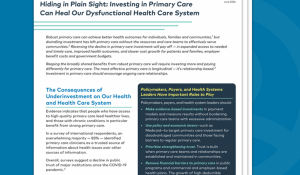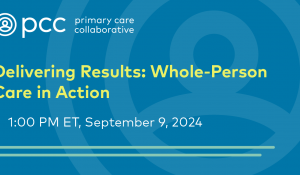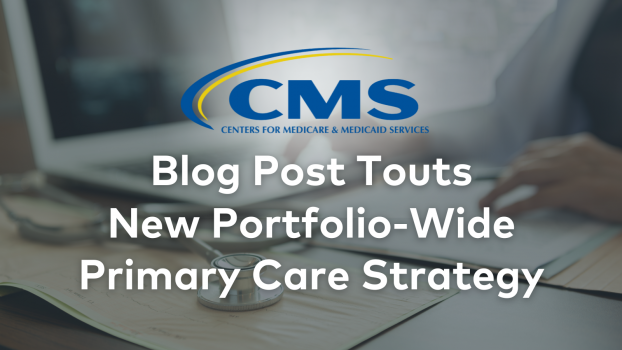You are looking at an archived version of our site. Please visit thepcc.org for a fresh, new experience!
You are here: Array » CMS Blog Post Touts Ne ...
CMS Blog Post Touts New Portfolio-Wide Primary Care Strategy
On Friday evening, June 9th, the Centers for Medicare and Medicaid Services Innovation Center released a new primary care strategy envisioning multiple pathways to strengthen primary care financing, including a hybrid primary care payment option within MSSP. This is the approach that PCC, NAACOS and other stakeholders have championed. The new strategy follows the day after the announcement of the new Making Care Primary payment demonstration in eight states. (See PCC's statement on the new model HERE.)
As detailed in the excerpt below, the new CMS strategy explicitly includes exploration of an MSSP-based hybrid primary care payment option. As primary care practices and their communities in all fifty states weather a workforce crisis, PCC is pressing CMS for a commitment to make a hybrid option as quickly as possible and on a nationwide basis.
Taken together, last week’s developments and the Administration's efforts to strengthen Medicaid primary care suggest important policy windows are opening–provided the primary care community can work together to make the most of them. That is the focus at PCC and our Better Health – NOW Campaign. Reach out to our Director of Policy Larry Mcneely at lmcneely@thepcc.org to get further involved in this important work.
Excerpt from CMS' Blog:
Future Pathways to Strengthen Primary Care Financing
“Evidence indicates that physician-led, primary-care-oriented ACOs generate more savings and have better outcomes compared to hospital-based ACOs. To better support ACO-based primary care practices, the Innovation Center is exploring ACO-based primary care model tests that may focus on practices in the Shared Savings Program. Such a model could consider ways to provide increased investment through prospective payments that allow primary care clinicians the flexibility to deliver care to improve beneficiary quality, outcomes, experience, and health equity.”
Recent News
August 16, 2024
August 12, 2024
July 16, 2024
May webinar highlights: “The Commercial Market: Alternative Payment Models for Primary Care” Nate Murray explains w… https://t.co/KX9Wi2w6oY —
2 years 6 months ago
@CMSinnovates’ primary care strategy is rooted in a 2021 @theNASEM’s report which called #primarycare “foundational… https://t.co/glbPxvCysg —
2 years 6 months ago
@CMSinnovates has a new #primarycare strategy, envisioning “ACO-based primary care model tests that may focus on pr… https://t.co/aJGF1z411l —
2 years 6 months ago
- Page 1
- ››
Secondary menu
Copyright © 2024 Primary Care Collaborative




